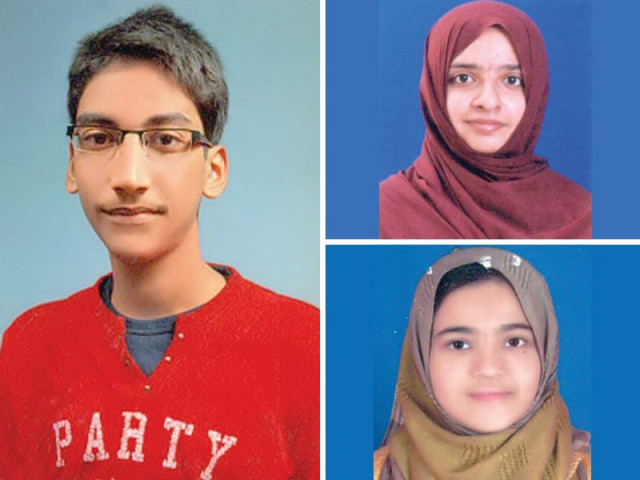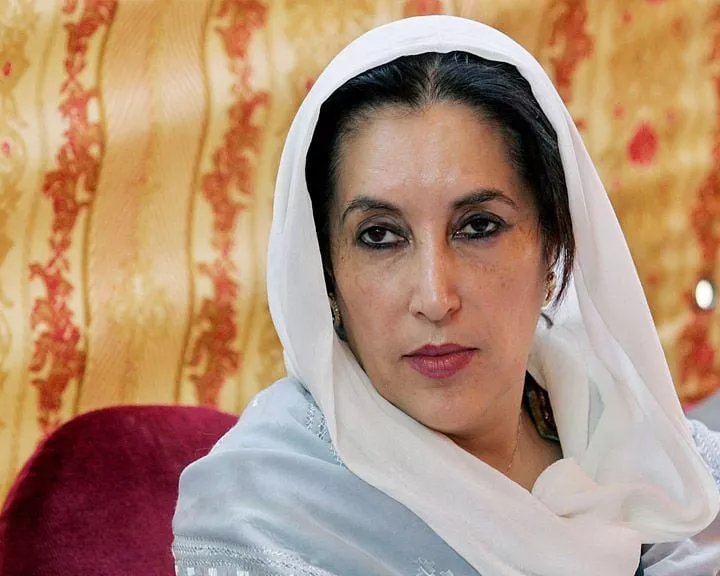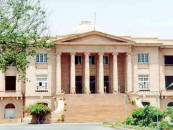AKU board toppers blame rote learning for poor performance of public boards
Say that besides textbooks, they are encouraged to go through a number of references.

Sameer Kayani, Maleeka Mehmood and Komal Zehra Zaidi
“While we are not any different in natural aptitude and learning abilities from students appearing in public examination boards, it is our critical thinking skills that allowed us to stand out today,” said Maleeka Mehmood of Habib Girls School, who secured the first position with 93.3 per cent marks in the AKU-EB exam results announced on Monday.
“We are repeatedly told by teachers that what is taught in the classrooms is not the end of the world,” she said. “We were encouraged to go through a number of references to explore the information available on any given subject.”
Komal Zehra Zaidi of the AKU Higher Secondary School, who stood second with 92.6 per cent marks, is on the same page as Mehmood. “Keeping aside the issue of transparency, there is a huge difference between the students of both boards in terms of reasoning abilities and application skills,” she said. “The only way out for the public examination boards is to move away from the extensive focus on rote learning.”
Mehmood believed that the foundation of a student’s learning is initially established by parents at home, followed by educational institutions which helped nurture specific learning skills. “If certain institutions are failing to play this crucial role, it is the responsibility of the authorities to review their policies and procedures to impart quality education.”
Medical education
The top two position holders wished to pursue medical education from the Dow University of Health Sciences (DUHS). “Considering the affordability factor, the DUHS is the most viable option for me,” said Mehmood. Zaidi concurred that the AKU was “beyond affordability” unless she managed to get a scholarship.
Aware of the dilemma faced by female students who opt for medical education and then fail to practice, the girls hope to change the trend. While the actual ratio of female versus male is 75:25 at medical colleges, nearly 75 per cent of female students do not practice after graduation, according to statistics provided by the Pakistan Medical Association.
“This situation, if it continues to persist, will spell a disaster for the country’s healthcare system,” remarked Zaidi.
Students’ performance
While these female students managed to clench the top two positions, Muhammad Sameer Kayani of the ETN High School secured the third position with 91.9 per cent marks.
The students’ overall pass percentage in the HSSC-Part I was 76.6 per cent with 22.5 per cent candidates scoring grade A or above. Meanwhile, 84.6 per cent of the total students who sat the HSSC Part-II exam got through with 29.5 per cent of them obtaining grade A or above.
Karima Kara, the AKU-EB associate director, appeared satisfied with the overall performance of the candidates. “We also appreciate the teachers and schools who prepared them for these competitive examinations by facilitating an active learning environment,” she said.
Published in The Express Tribune, July 23rd, 2013.



















COMMENTS
Comments are moderated and generally will be posted if they are on-topic and not abusive.
For more information, please see our Comments FAQ